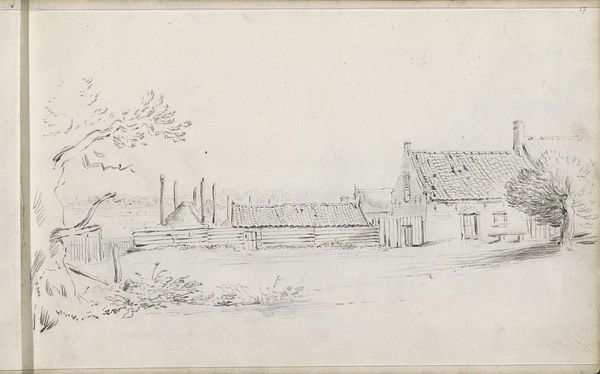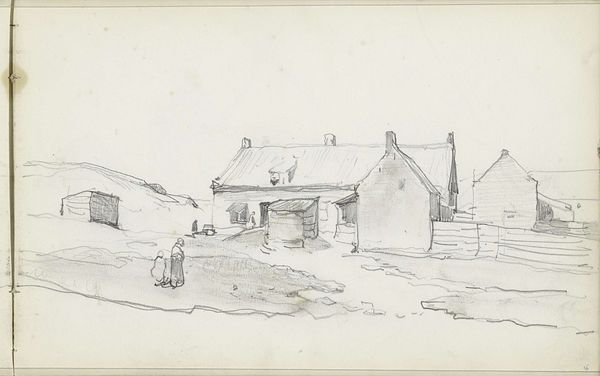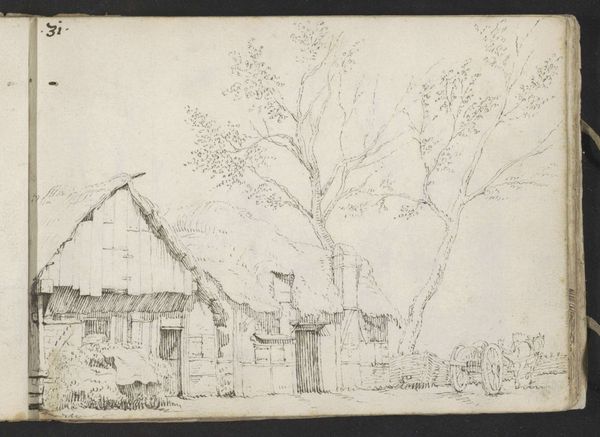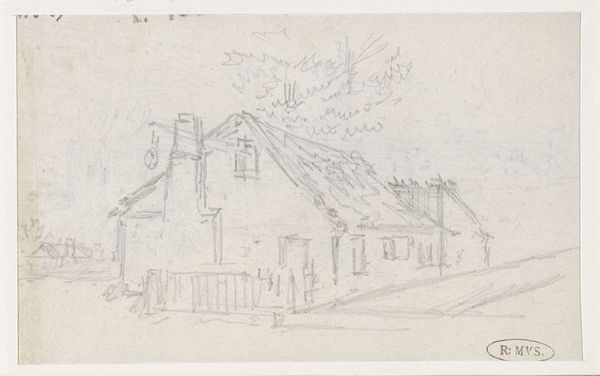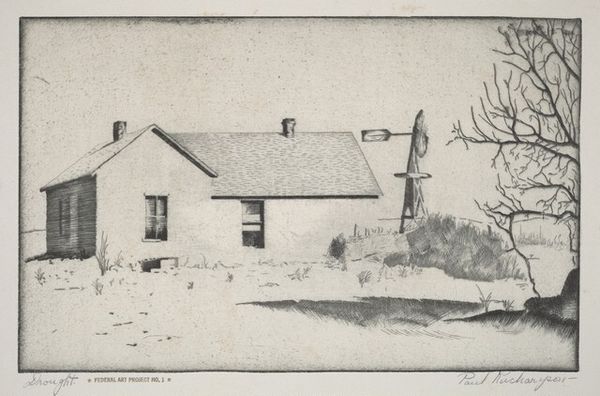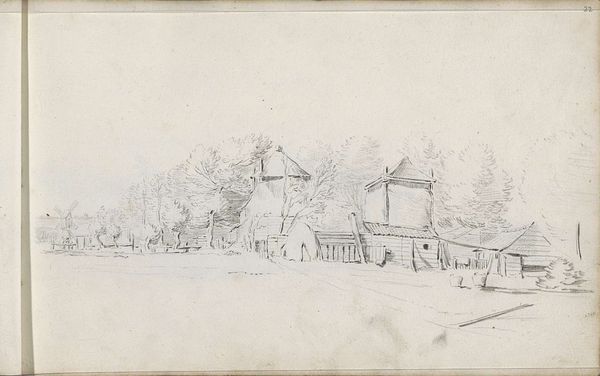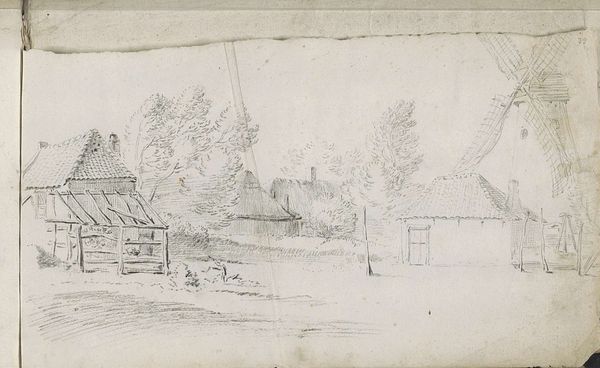
drawing, pencil
#
drawing
#
dutch-golden-age
#
landscape
#
pencil
#
realism
Copyright: Rijks Museum: Open Domain
Editor: This is "Boerenerf met hooimijt en gebroken wiel" by Pieter Moninckx, created around 1645-1646. It's a delicate pencil drawing of a farmyard. There's a sense of quiet melancholy, maybe because of the broken wheel. What stands out to you about the composition? Curator: The beauty of this drawing lies in its structural clarity. Observe how Moninckx uses line weight to create depth. The foreground, delineated with darker, more assertive lines, grounds the composition, leading the eye towards the lighter, more ethereal rendering of the background structures. Editor: So the varying pressure of the pencil creates space? Curator: Precisely. It's a masterful manipulation of a simple medium to achieve spatial recession. Note also how the horizontality of the farm buildings and the hayrick is subtly disrupted by the vertical accents of the supporting posts and the tree. Editor: That adds a sort of...rhythm to the piece, doesn't it? And even that broken wheel you can appreciate from an aesthetic perspective. Curator: It interrupts the predictable pattern, adding visual interest. Semiotically, you might even read the broken wheel as a subtle commentary on the transience of rural life. But formally, it serves as a crucial element in the overall balance. Without it, the left side of the drawing might feel too empty. Editor: That’s fascinating. I initially focused on the representational aspects, but seeing how all of the elements work together abstractly provides a new way to look at it. Thanks for opening my eyes. Curator: Indeed, close visual analysis can reveal the underlying structure that supports meaning and aesthetic impact. It's a fruitful exercise, always.
Comments
No comments
Be the first to comment and join the conversation on the ultimate creative platform.
